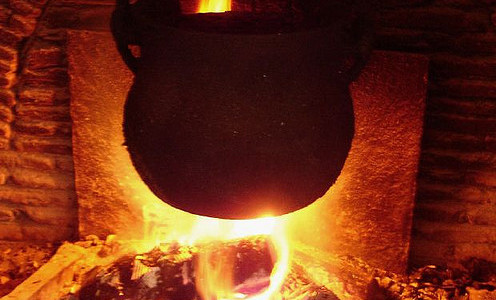
A few months ago, we launched one of our new products: Visio, a protein loading buffer that allows you to watch your proteins as they migrate through the gel. Compatible with downstream mass spectrometry, Visio contains a protein stain in the loading buffer, that saves time by skipping staining and destaining steps to visualize your proteins. And it gives you a bit more confidence that you won’t run your protein off the gel.
One of our customers asked why our Visio protocol says to heat protein samples to 95-100°C prior to loading on the gel.
The simple, and a bit cheeky, answer is that regardless of the type of loading buffer you use, unless you are running a native gel, you should always heat protein samples before putting them in the well. The heat isn’t special to Visio. But this answer doesn’t explain why heat is important. To really understand the process of preparing your samples for electrophoresis, let’s talk about the components of protein loading buffer.
What’s in protein loading buffer?
What would a molecular biology reagent be without its buffer? Not much good, I imagine.
Protein loading buffer has a couple of helpful components that allow you to easily load and track your proteins during electrophoresis. More importantly, the buffer also contains agents that denature proteins and ensure that the proteins separate by size in the gel. All components are mixed together with gel buffer to make a concentrated stock solution that is diluted with your protein samples.
Dye
The most visible component of loading buffer is a dye that can be seen by the naked eye. The dye helps you make sure you are dropping your samples in to the correct wells and allows you to track progress of the electrophoresis. The most commonly used dye is bromophenol blue (BPB; final concentration 0.01-0.02%). BPB has a slightly negative charge during electrophoresis and will migrate in the same direction as your proteins. It moves with the ion front, so it doesn’t mark a particular protein per se, but serves as a marker of electrophoresis.
In contrast, Visio contains a dye that binds to each protein in the sample, so you can actually watch individual proteins migrate through the gel.
Glycerol
Ever wonder why your samples don’t float out into the buffer when you load them in the wells? Thank Mr. Glycerol for that – An unsung hero in the protein loading buffer! This inert substance has little to do with the chemistry involved with electrophoresis, and a lot to do with making your life easier. Glycerol (10% w/v) is denser than the running buffer, allowing your samples to “sink” down to the bottom of the wells rather than diffuse into the buffer.
SDS
Sodium dodecyl sulfate (sometimes called sodium lauryl sulfate) puts the SDS in SDS-PAGE. SDS dissolves hydrophobic regions of proteins and breaks non-covalent ionic bonds. This makes proteins lose their globular structures and become linearized. SDS also coats the proteins, giving them a uniformly negative charge that is proportional to their molecular weight. This negates any effects that the charge of the proteins might have on migration rate. SDS is provided in sufficient quantity to saturate most proteins – 2%.
Reducing agents
To make sure your proteins are completely broken down into their linear forms, protein loading buffer also contains one of those smelly reducing agents – usually beta-mercaptoethanol (5%) or dithiothreitol (DTT; 0.3M). Reducing agents break disulfide bonds disrupting intra- and inter-molecular bonding.
And last but not least: why you heat protein samples
Once your samples have been diluted with loading buffer, it’s time to heat things up. Use a heat block or boiling water, heat samples to 95-100°C. The amount of time required for heat varies between protocols, but it is generally 2-10 minutes.
Heat ensures that your samples are truly denatured. In addition, heat loosens up samples gummy from DNA and cellular debris, making the samples easier to load.
So that’s the long answer as to why you heat protein samples prior to loading. The short answer? Because that’s the way you do it!
If you have any questions, send them along. We will do our best to answer them.
Photo courtesy of hardworkinghippy.

Leave a Reply